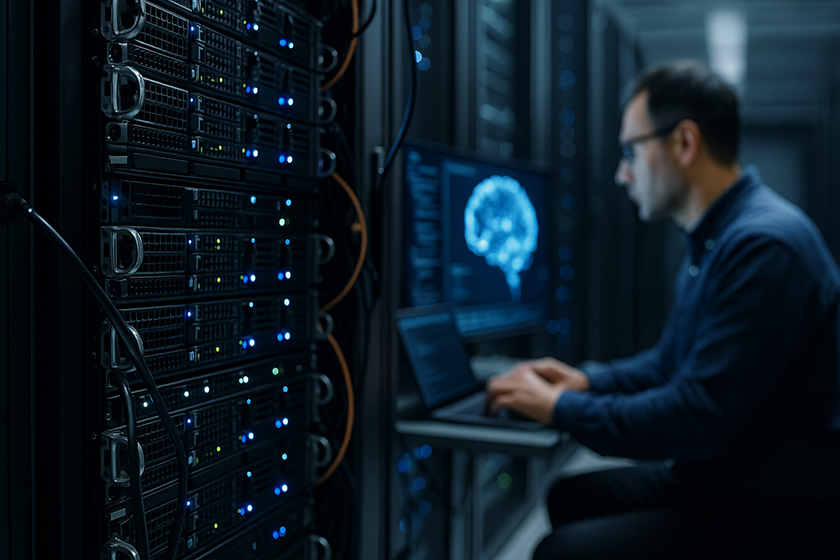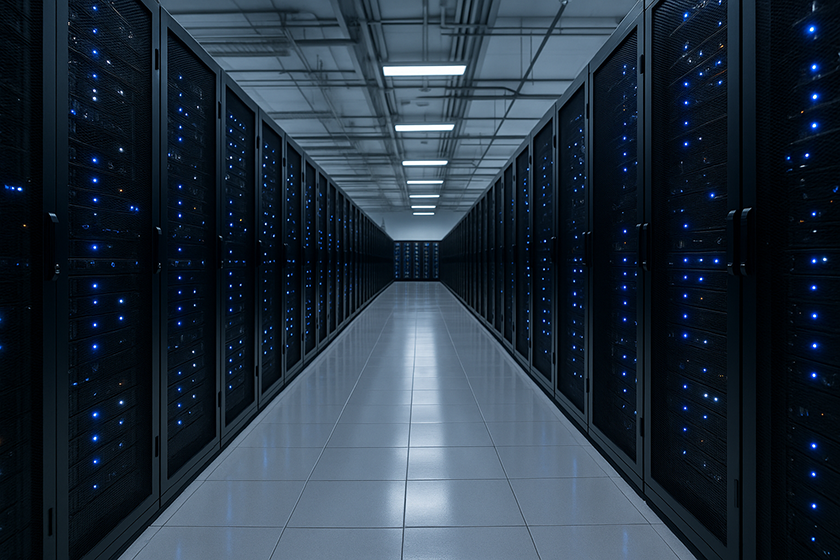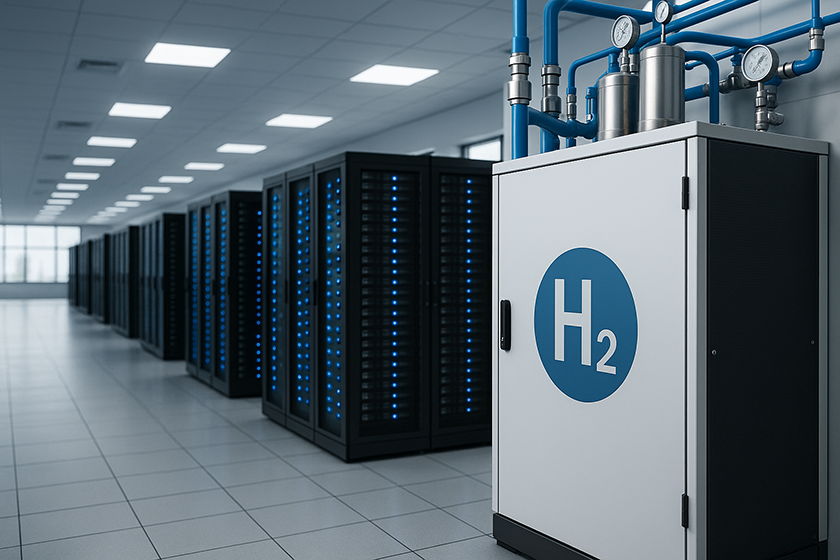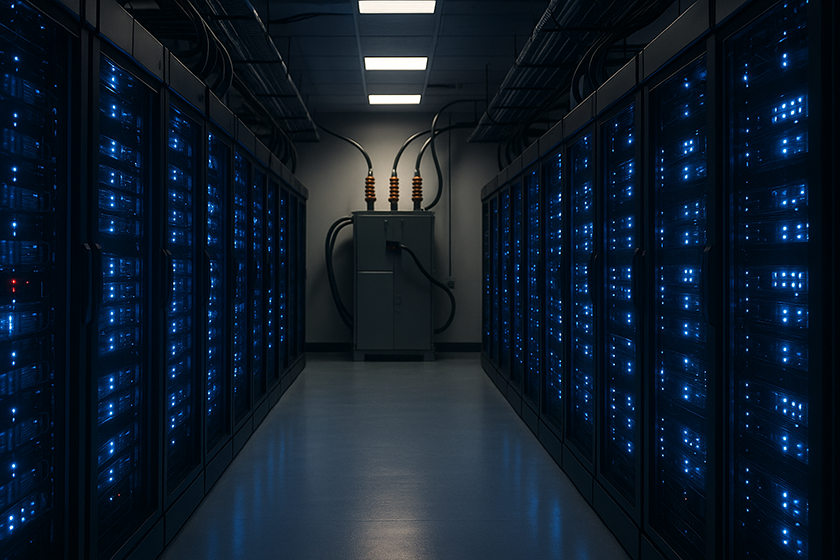How AI is impacting the adoption cycles of hydrogen and fuel cells
Artificial Intelligence is transforming the world around us. From personalized recommendations to large language models and self-driving systems, AI is becoming a part of everyday life and business. As its uses grow, so does the demand for the computing power behind it.
What many do not see is the hidden cost of intelligence. The energy needed to keep these systems running is massive. AI tools, especially those used to train large models, require a huge amount of electricity. This is turning the conversation from just a technology challenge into an energy challenge.

The big question now is how we can support this growth with power that is clean, reliable, and ready to scale. Traditional energy sources are already under pressure. A new approach is needed. Hydrogen fuel cells are rising as a strong and future-ready solution.
But hydrogen is not just another clean energy option. It can also support the grid directly. As AI demand grows, power grids are struggling to keep up. Hydrogen steps in to help when the grid is under pressure. Hydrogen production systems can quickly adjust how much energy they make based on real-time needs. This helps reduce power costs and prevent blackouts. It’s not just about clean energy anymore. Hydrogen has become a smart and flexible way to manage rising energy demands.
AI’s Energy Challenge
Artificial Intelligence is not just evolving in capability. It is also becoming one of the most energy-intensive technologies in the world. Every time a model is trained, refined, or deployed at scale, it demands significant electricity to process data, store results, and maintain performance.
A recent study found that training a single large AI model can consume more energy than 100 average homes use in a year. Multiply this across thousands of models and millions of queries every day, and the numbers become staggering. In fact, the energy used by AI tools is expected to double every year for the foreseeable future.
Most of this power is drawn by data centers. These facilities are the engines behind AI innovation. They run advanced chips like GPUs and TPUs, which are designed to handle large volumes of calculations at high speed. But these chips also run hot and require constant cooling, which adds to overall energy use.

Data centers are now facing growing pressure, not just from inside the tech world but also from power suppliers and governments. In some parts of the world, including regions known for heavy data infrastructure, electric grids are already hitting capacity. In these areas, new data centers are being paused or delayed because utility providers cannot guarantee stable power.
This creates a major challenge. On one side, there is a global race to scale AI. On the other, there are real physical limits to how much power the grid can deliver. Expanding traditional infrastructure takes time, money, and in some cases, public approvals that slow everything down. Meanwhile, the demand for AI services keeps climbing.
In many cases, AI workloads also need high uptime and fast response. Power disruptions or limitations can reduce model performance, delay tasks, or cause system downtime. This risk is especially high in locations with unstable or overused power grids.
All of this adds up to a key question for AI companies, cloud providers, and infrastructure teams: how do you scale AI without being held back by the grid?
Meeting this challenge means more than finding new power sources. It also requires flexibility in when and how energy is produced. Hydrogen systems can store extra renewable energy when supply is high and deliver it back when the grid is busy or energy prices rise. This makes them a helpful tool for balancing energy flow.
The Role of Hydrogen Fuel Cells
As AI continues to grow, the need for clean, reliable, and scalable power becomes more urgent. One technology that is gaining attention in this space is the hydrogen fuel cell. While fuel cells have long been used in industries like logistics and transportation, they are now becoming a serious option for powering data centers and AI infrastructure.
Fuel cells are only part of the picture. What makes hydrogen systems even more valuable is how they interact with the grid. When powered by electrolyzers, hydrogen can be produced using extra renewable energy when demand is low and paused when power is needed elsewhere. This makes it easier to manage energy as AI systems put more strain on the grid.
- Clean power with zero emissions
Hydrogen fuel cells generate electricity through a chemical reaction between hydrogen and oxygen. There is no combustion involved, and the only byproducts are water and heat. This makes them a clean energy source with zero carbon emissions at the point of use. - Grid independence and reliability
Fuel cells can operate completely independent of the power grid. This is especially useful for data centers that require high up time. In areas with power shortages or unreliable supply, fuel cells can serve as a consistent and uninterrupted source of electricity. - Flexible and scalable deployment
Fuel cell systems are modular by design. They can be deployed in small configurations or scaled to support full data center loads. This flexibility makes it easier to install, expand, and relocate as needed. - Higher efficiency compared to combustion systems
Fuel cells convert hydrogen into electricity through an electrochemical process, which leads to fewer energy losses. This results in higher overall efficiency, making them more suitable for energy-intensive AI applications. - Support for renewable energy goals
Hydrogen can be produced using renewable sources like solar or wind. When paired with green hydrogen, fuel cells offer a low-carbon or even carbon-free energy pathway. This helps AI-driven companies meet their sustainability goals without compromising on performance.
Fuel cells are not just an alternative to traditional power sources. They are a smart choice for future-focused AI infrastructure that values performance, reliability, and environmental responsibility.

Real-World Adoption Trends
As the energy needs of AI infrastructure grow, companies are exploring dependable alternatives that can scale quickly and reduce environmental impact. Hydrogen fuel cells are starting to play a larger role in this shift, with early signs of adoption across data and tech sectors.
- Shift toward hybrid energy models
Operators are combining power sources like grid electricity, batteries, and hydrogen fuel cells to ensure stability. Microsoft’s recent collaboration with Caterpillar to test large-format hydrogen fuel cells for backup data center power is one example. These hybrid models reduce reliance on diesel and provide flexibility in energy planning. - Hydrogen does more than just provide backup power
Some hydrogen systems can adjust their output based on grid needs. This helps reduce pressure during peak times and lets them make the most of lower-cost energy when it’s available. That kind of flexibility is becoming more important as AI demand grows quickly. - Fuel cells entering modern data infrastructure
Equinix, one of the world’s largest data center providers, has deployed fuel cell systems at several of its facilities, including a Bloom Energy fuel cell project at its Silicon Valley site. These installations are designed to deliver cleaner, distributed power directly on site. - Tech companies exploring hydrogen for scale
Google has publicly shared its experiments with low-carbon and backup power options. In a 2023 whitepaper, it mentioned hydrogen fuel cells as a promising alternative to diesel, especially for regions where grid upgrades are difficult or delayed. - Projected growth based on industry reports
A report by Deloitte and Ballard Power Systems forecasts significant growth in stationary fuel cell markets, estimating a global compound annual growth rate (CAGR) of 17 percent through 2030. The same report highlights increasing interest in using fuel cells to support digital infrastructure. - Cost, availability, and reliability improvements
According to the International Energy Agency (IEA), costs for hydrogen production from renewables have fallen by over 60 percent since 2010. Ongoing policy support, including tax incentives under the Inflation Reduction Act in the US and hydrogen roadmaps in Europe and Asia, is driving further investment and reducing barriers to scale.
These examples show that hydrogen fuel cells are no longer just a concept. They are being tested, deployed, and discussed as part of the real solutions mix for AI-ready infrastructure. As demand grows, adoption is expected to rise, supported by market data and on-the-ground projects.
Supporting AI at Scale
The rapid growth of AI is putting new pressure on data centers to scale faster, operate more efficiently, and stay resilient in the face of energy supply challenges. Meeting these demands requires more than just hardware upgrades. It calls for power systems that can match AI’s performance and availability needs, especially in regions where the grid is already strained or reaching capacity.
- AI workloads demand continuous high-power compute
Training large-scale models like GPT-4 or Gemini often requires thousands of GPUs running day and night for weeks or months. These models consume energy at a level once seen only in national computing labs. A single training cycle for a state-of-the-art model can be used for over 1,000 megawatt-hours. Maintaining this performance across multiple projects and deployments demands energy systems that are both stable and scalable. - AI workloads require constant, high-performance compute
Training advanced AI models can consume over 1,000 megawatt-hours per cycle and must run continuously for extended periods. Supporting this at scale requires more than just grid access. It demands clean, stable, and scalable power that can match the pace of innovation. - Energy supply remains a limiting factor
In regions where grid capacity is limited, data center expansion has already slowed or paused. This is creating a clear need for alternative power solutions that reduce reliance on public infrastructure while maintaining high uptime.
Hydrogen fuel cells provide a path forward. They deliver dependable power, operate with near-zero emissions, and offer flexibility for rapid deployment. For AI infrastructure to continue scaling, fuel cells present a clean and practical foundation to meet both energy performance and sustainability targets.

Driving Sustainability Goals
As the digital world moves faster, sustainability is becoming a key part of every technological decision. AI companies, cloud providers, and infrastructure partners are under pressure to reduce emissions and transition away from fossil fuels. Hydrogen fuel cells offer a clear path toward these goals without sacrificing performance or uptime.
- Replacing diesel with cleaner backup power
Most data centers still use diesel generators as a backup during power outages. These systems emit carbon dioxide, nitrogen oxides, and particulate matter. Hydrogen fuel cells provide the same reliability but with none of the harmful emissions. The only byproduct is water vapor. This shift allows facilities to maintain 24/7 operations while reducing their environmental impact. - Enabling the use of green hydrogen
When hydrogen is produced from renewable energy sources like wind or solar, it becomes a fully green fuel. This is known as green hydrogen. The International Energy Agency projects that green hydrogen could account for more than half of global hydrogen production by 2050 under current policy trends. Pairing green hydrogen with fuel cells creates a closed-loop clean energy system that is both efficient and scalable. - Supporting corporate climate goals
Many global tech companies have pledged to reach net-zero carbon emissions over the next decade. Amazon, Google, and Microsoft have all made public commitments to operate on 100 percent clean energy. While solar and wind are part of the solution, these sources are intermittent. Fuel cells powered by renewable hydrogen can offer continuous clean power to meet up-time requirements while helping these companies reach their targets. - Meeting government regulations and customer expectations
Energy transparency and emissions reporting are becoming standard in many industries. In regions like the European Union and parts of North America, new policies are requiring data center operators to disclose energy sources, carbon intensity, and resilience plans. Deploying hydrogen fuel cells can help organizations meet these expectations while positioning themselves as sustainability leaders. - Reducing water and land use compared to other energy sources
Some traditional power generation methods, including coal and nuclear, require large amounts of water for cooling. Fuel cells operate without this demand, reducing the environmental footprint in terms of both water use and infrastructure space. This is especially important in regions where land and water are limited resources.
Hydrogen fuel cells offer more than a low-emission option. They support a shift in how the energy behind AI is generated, stored, and delivered. For companies aiming to grow without growing their carbon footprint, this technology presents a clear and actionable path forward.
Looking Ahead
The AI revolution is just beginning. As models become more powerful and integrated into every part of life and business, the need for energy will continue to grow. Meeting this demand with traditional power sources alone is not sustainable. Grid congestion, emissions concerns, and the slow pace of infrastructure expansion are already slowing down progress in some regions.
Hydrogen fuel cells offer a path forward. They bring together three key qualities that modern AI infrastructure needs (reliability, scalability, and low environmental impact). Whether used as a primary energy source or as part of a hybrid solution, fuel cells are showing they can meet the high demands of data-intensive computing.
Real-world deployments are already proving that hydrogen can support data centers, reduce emissions, and bypass grid constraints. From off-grid modular facilities to major trials by global tech companies, the movement has started. As the cost of hydrogen continues to fall and green hydrogen production scales, this clean energy source is likely to play an even bigger role in the AI ecosystem.
As AI continues to change how we use electricity, hydrogen will play a bigger role, not just as a clean energy source, but as a key part of keeping power systems balanced. When hydrogen production and storage are added to the energy mix, it becomes easier to smooth out demand, manage costs, and build new AI-ready infrastructure faster.
The future of AI depends not only on smarter algorithms but also on smarter energy choices. Hydrogen fuel cells offer one of the most promising solutions available today. As companies look to build the next wave of intelligent infrastructure, clean and resilient power will be just as important as processing speed or storage capacity.
References
- AI Energy Consumption
- Patterson et al., 2021. Carbon Emissions and Large Neural Network Training. https://arxiv.org/abs/2104.10350
- MIT Technology Review. Training a single AI model can emit as much carbon as five cars in their lifetimes. https://www.technologyreview.com
- Microsoft Hydrogen Pilot, Dublin
- Microsoft. Green Hydrogen Pilot with ESB, 2024. https://news.microsoft.com/emea/2024/09/microsoft-announces-pioneering-green-hydrogen-pilot-project-with-esb
- ECL MV1 and Texas AI Hydrogen Data Center Plans
- Data Center Frontier. ECL launches hydrogen-powered modular data center in California. https://www.datacenterfrontier.com
- OpenAI Model Power Use
- The Verge. OpenAI’s GPT-3 training reportedly used 1,287 MWh of electricity. https://www.theverge.com
- Bloom Energy and AEP Partnership
- Barron’s. Bloom Energy teams with utility to provide fuel cells for AI data centers. https://www.barrons.com/articles/ai-electricity-bloom-energy-d6df6af4
- Data Center Delays in Northern Virginia
- Loudoun Times. Loudoun County data center projects delayed by grid constraints. https://www.loudountimes.com
- Future Market Insights – Fuel Cells in Data Centers Report
- FMI. Fuel Cell for Data Center Market Outlook (2023 to 2033). https://www.futuremarketinsights.com/reports/fuel-cell-for-data-center-market
- IEA – Green Hydrogen Production Trends
- International Energy Agency. Global Hydrogen Review 2023. https://www.iea.org/reports/global-hydrogen-review-2023
- Data City Hydrogen Campus, Texas
- Houston Chronicle. Energy Abundance plans hydrogen-powered AI data hub in Texas. https://www.chron.com/business/article/energy-abundance-data-center-20237940.php
- Equinix Fuel Cell Deployment
- Equinix. Bloom Energy Fuel Cells at SV5 Data Center. https://www.equinix.com